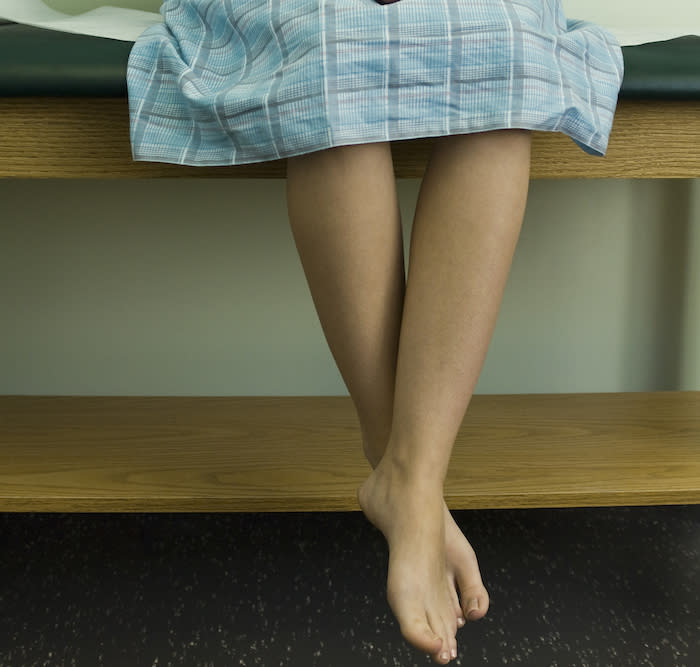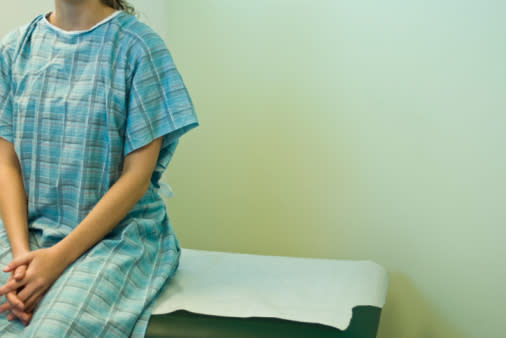Surviving blood clots changed both my perspective and my body
The plane landed, and I ended my third and final travel leg from my international trip to Peru. And something didn’t feel right. I had an unfamiliar pain in my leg. I had heard of people getting blood clots after flying long distances, and my gynecologist had warned me that blood clots were a side effect of my birth control. Still, I never thought they would happen to me.
Blood clots felt nothing more than hypothetical. The real possibility of them felt removed from my existence. The plane began to de-board, and I gathered myself together while my calf throbbed. But I kept telling myself not to be dramatic, and to just get home.
Back in the Midwest and finally sitting at home, I reminded myself that Peru had been a pretty physical trip. Lots of climbing and walking. I assumed it was a pulled muscle, and convinced those around me not to worry. I didn’t have all of the blood clot symptoms that I read about online; my skin wasn’t red and my my calf didn’t feel hot. It just felt sore. So I got back to my every day routine and hoped for the best.
But one night, when I was home alone after walking around with my sore calf for two weeks, I had a sudden sensation I couldn’t ignore. I promised myself that, the next day, I would go to an urgent care after work. Just to give myself piece of mind. Just so I could stop worrying.
At urgent care, the nurse practitioner measured my calves and discovered that my left calf was two inches bigger than my right. She immediately sent me to the emergency room for an ultrasound, which confirmed her thoughts about my diagnosis.
I tested positive for DVT (Deep Vein Thrombosis) in my left foot, calf, and thigh. Blood clots.
I didn’t know what else to do but cry.
***
Since that night in the emergency room, I’ve realized that I am extremely lucky. Walking around with blood clots in my leg for two weeks was extraordinarily dangerous. Clots can break off and move into different parts of your body. If they reach the lungs, they can cause a pulmonary embolism and, ultimately, death. Fortunately, my blood clots stopped at my thigh.
Over the course of six months, I was put on blood thinners, wore a compression sock every day, and had to limit my physical activity.
Although this health journey was about my physical body, I also had to work through the mental process of forgiving myself.
Recovering from this experience mentally and emotionally has been the hardest part, and I’m still working on it through self-affirmations and therapy. Subconsciously, I blamed myself: I was on birth control and I didn’t walk around on my long international flight. Because of my decisions, I told myself, my life is forever changed. Due to my new medical history, if I ever get pregnant, I will automatically be considered a high-risk pregnancy. If I ever have surgery, or whenever I travel by airplane, I will have to take blood thinners.
However, the reality is that many women go on birth control and don’t experience this side effect. Many women fly internationally without standing up to walk on the plane every hour, and they don’t get blood clots. Blood clots happened because of how my body reacted, not because of what I did to it.
I’m letting go of my guilt and better understanding my body so that I can deal with any other health issues that may happen in the future.
Since the diagnosis, I’ve had several doctor visits and underwent two small procedures. First, I went to the hospital so doctors could check for May-Thurner syndrome (which I only had a 3% chance of having). During the procedure, I was consciously sedated while a catheter was inserted through a vein in my neck. Ink was then injected into my veins in order for doctors to check for the syndrome.
I was so fearful, but I knew this test was something I had to face. Thankfully, it was discovered that I did not have the syndrome.
I learned that, when faced with frightening obstacles, it doesn’t matter if I don’t think I’m strong enough to handle it. I am strong enough — because I have to be.
The second procedure was an iron infusion. I needed it because I became extremely iron deficient after taking blood thinners, in conjunction with irregular and heavy periods. Thankfully, that procedure only required an IV in my hand.
After navigating these six months of physical recovery, my mental health — and my perspective on life and how I’d been living it — has completely changed. I’d spent so many years worrying about my family and friends more than myself; I was alright with waiting for life to happen to me. Now, I am more honest with myself than ever before. I’m more open to new experiences and more excited about dating.
I’m less anxious about my future because I know I’m lucky to have one.[/subhea
With this new perspective, the small stuff just doesn’t matter as much any more.
***
As I’ve started letting go of guilt over my blood clots, I’ve often contemplated why bad things happen. The reality is that no one has the answers, and I’m certainly not the only person to battle health problems. But I now understand that, although this bad thing happened to me, it provoked a needed shift in my perspective. I will no longer remain stagnant in my choices and daily routines. I can’t always prevent difficult or dangerous circumstances, but I can plan to move forward from each obstacle and learn more about myself.
And since I’ve already survived being conscious while a catheter is inserted down my neck, I know I can handle whatever next comes my way.




